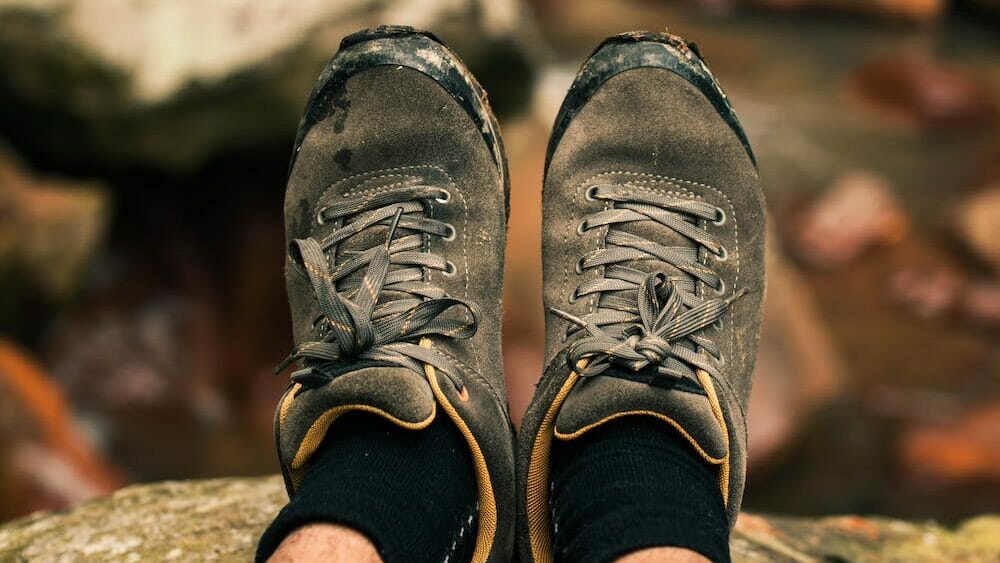How Often Should You Replace Your Hiking Boots?
I replace my hiking boots every 15 to 20 months, depending on how often I use them. I usually go on several hiking trips every year and cover around 500 miles or more on average.

So, I make sure to check the soles, the insoles, and the overall condition of my boots regularly. If I notice any significant wear and tear or loss of support, I replace them to avoid any potential injuries.
However, if I don’t use my hiking boots that often, I keep them for a longer period before replacing them.
Now the point is how often should you replace your hiking boots, so I’ll answer this query with examples in this article so you can understand better that replacement of old hiking boots is also a necessary step.
11 Best Cheap Waterproof Hiking Boots
How Often Should You Replace Your Hiking Boots?
When it comes to the question of how often you should replace your hiking boots, there is no one-size-fits-all answer. The lifespan of your boots is affected by a variety of factors, including frequency of use, terrain, weather conditions, and the quality of the boots themselves.
However, as a general guideline, it’s recommended that you should replace your hiking boots every 500-900 miles or every 1-2 years, whichever comes first.
Of course, this guideline may not be perfect for everyone but if you hike frequently on challenging terrain like me, you may need to replace your boots more often.
On the other hand, if you only hike occasionally on easy trails, you may be able to get more use out of your boots before they need to be replaced. Ultimately, it’s up to you to assess the condition of your boots and decide when it’s time to replace them.
Signs of Replacing Hiking Shoes
Certainly! Here are some signs of wear and tear to look out for in your hiking boots:
1.Sole Erosion
Sole erosion is one of the most common wear and tear issues that hikers face, and it’s crucial to know how to spot it before it becomes a real stumbling block on your adventures.
When examining your boots, pay close attention to the tread pattern on the outsole. Are the once prominent lugs now smooth and flat? If so, it’s a clear indicator that your boots may be losing their grip, making slippery surfaces and muddy terrains treacherous challenges.
Being proactive about identifying and addressing sole erosion in your hiking boots is a crucial step in ensuring your safety and enjoyment on the trails.
By regularly inspecting your boots, employing preventive measures, and considering resoling when necessary, you’ll be well-equipped to conquer any hiking challenge that comes your way.
2.Cracks and Tears
Cracks and tears in your hiking boots are not to be taken lightly, as they can signal potential dangers lurking beneath the surface. While these imperfections may appear minor, they can lead to a host of issues that could compromise your outdoor experience.

The upper material of your boots plays a crucial role in providing durability, support, and protection against the elements. When cracks begin to appear, the boot’s overall structural integrity becomes compromised, leading to reduced water resistance and diminished support for your feet.
3.Toe cap
A tear near the toe cap is another red flag that should capture your attention. The toe cap serves as a crucial shield, guarding your toes against accidental bumps and impacts.

If the tear continues to worsen, it may expose your toes to potential hazards, leading to discomfort and, in extreme cases, injury.
If a tear is spotted early, applying a reliable adhesive specifically designed for outdoor gear might salvage the situation.
4.Moisture Leakage
Moisture leakage, or the unfortunate phenomenon of water finding its way into your beloved hiking boots, can stem from various factors.
Constant exposure to wet environments, wear and tear on seams and materials, and inadequate waterproofing treatments can all contribute to this unwelcome issue.

Extended usage without proper care and maintenance may compromise the boot’s protective barrier, leading to unwanted leaks during critical moments on the trail.
5.Heel wear
If you’re standing at the edge of a breathtaking summit, eager to conquer new heights. As you take your first steps, the heel of your hiking boot feels different – less cushioned and supportive than before.
That’s the telltale sign of heel wear. When the heels of your boots begin to erode, they lose their shock-absorbing capabilities, leading to discomfort and even pain during your treks. This issue is especially prevalent for avid hikers who log countless miles on rugged terrains.
Not only can heel wear dampen your hiking spirits, but it can also impact your overall stability and safety on the trails. A worn-out heel reduces the boot’s ability to stabilize your foot, making slips and falls more likely, particularly on uneven or slippery surfaces.
This lack of support can also strain your ankles and joints, increasing the risk of injuries and hindering your ability to tackle more ambitious adventures.
6.Ankle Support
When your hiking boots lose their original ankle support, it’s like losing a steadfast companion on the trail. Ankle support is critical, especially when navigating uneven surfaces and rocky paths.

It’s what keeps your ankles stable and prevents unwanted twists and sprains. As the miles add up and wear takes its toll, the once-firm ankle collar may begin to soften, causing it to lose its shape and structural integrity.
This change can lead to inadequate stability, impacting your overall balance and increasing the risk of accidental slips or trips.
Aside from affecting your physical safety, reduced ankle support can also result in discomfort and fatigue. Without the proper reinforcement around your ankles, you may experience undue pressure and friction during prolonged hikes.
This can lead to blisters, chafing, and hotspots, transforming your much-anticipated outdoor adventure into an uncomfortable ordeal.
7.Creasing
When it comes to our trusted hiking boots, we often look for signs of wear and tear to determine if it’s time to bid them farewell.
One such indication that hikers should be on the lookout for is “creasing,” a subtle yet significant clue that our beloved boots might be reaching the end of their journey.
Creasing occurs when noticeable lines or folds develop in the midsole or upper of the boot, typically in the flex points where our feet naturally bend during movement. While this might seem like a minor issue, it can have a substantial impact on both the comfort and functionality of your hiking experience.
Now, you might be wondering, “Can’t I just ignore these creases?” Well, you can, but at a cost. Ignoring the creasing can lead to further damage, affecting the structural integrity of your boots over time. As the creases deepen, the midsole may lose its cushioning properties, leaving you susceptible to foot fatigue and discomfort during extended hikes.
Those worn creases can create weak points in the boot’s upper, increasing the risk of tears and water leakage – not an ideal situation when you’re in the middle of an adventurous escapade.

14 Best Waterproof Hiking Boots Under $100 (Buying Guide )
If you’re not sure whether your boots need to be replaced, take a close look at the signs of wear and tear.
If you notice any of these signs, it’s probably time to start shopping for a new pair of hiking boots. Now what the signs, you will change your shoes after seeing them. We’ll discuss these later in this blog.
Factors Affecting The Lifespan Of Hiking Boots
Several factors affect the lifespan of hiking boots, and it’s important to keep these in mind when choosing and caring for your boots. Here are a few examples:
Frequency of use
As I have mentioned my hiking boots tend to wear out more quickly during the summer months when I hike more frequently. On the other hand, during the winter when I don’t hike as often, my boots tend to last longer.
So the more often you wear your hiking boots, the more quickly they are likely to wear out. If you’re a frequent hiker, you may need to replace your boots more often than someone who only hikes occasionally.
Are Columbia Hiking Boots Good
Terrain
During a recent hike on a particularly rugged trail, I noticed that the soles of my hiking boots began to wear down much more quickly than usual. This was likely due to the constant impact and abrasion from the rocky terrain.
The type of terrain you hike on can also affect the lifespan of your boots. Rough or rocky terrain can cause more wear and tear than flat, even trails.

Weather condition
I once made the mistake of hiking in my hiking boots during a heavy rainstorm, and the next day I noticed that they had become stiff and began to crack. I had to replace them much sooner than I had anticipated.
Exposure to moisture and extreme temperatures also affects the lifespan of your hiking boots. Wet conditions cause the leather or fabric to break down more quickly, while extreme heat or cold can cause cracking or other damage.
Quality of the boots
I have invested in a high-quality pair of hiking boots. My current pair of boots, which were a bit more expensive than my previous pairs, have lasted me much longer and are still in great shape after many hikes.
So the quality of the boots themselves also plays a big role in how long they last. Higher-quality boots with better materials and construction are likely to last longer than cheaper, lower-quality boots.
Are Hiking Shoes Suitable For Construction Work?
Please Take Care Of Your Shoes
Taking care of your hiking boots is crucial if you want them to last as long as possible. Here are some tips on how to extend the lifespan of your hiking boots:
Clean and dry your boots after each use
After a hike, be sure to clean your boots thoroughly to remove any dirt or debris. Use a soft brush or cloth and warm water to gently clean the boots. Once you’ve cleaned them, be sure to let them dry completely before storing them.
Store your boots properly
It is also important to store your boots in a cool, dry place away from direct sunlight. Avoid storing them in damp areas, as this can cause mold and mildew to form.
If you’re storing your boots for an extended period, it’s a good idea to stuff them with newspaper or a shoe tree to help them keep their shape.
Can You Wear Hiking Socks For Skiing
Avoid extreme temperatures
Extreme temperatures cause your boots to break down more quickly. Avoid leaving your boots in hot cars or exposing them to freezing temperatures for extended periods.
Condition your boots
Conditioning your boots regularly help to keep the leather or fabric supple and prevent cracking or stiffness. Use a leather conditioner or fabric-specific waterproofing spray to keep your boots in good condition.
By following these tips, you can help extend the lifespan of your hiking boots and keep them in good condition for many hikes to come.
Can I Wear Hiking Shoes To Work Or School?
Can Hiking Boots Be Resoled?
Are your trusty hiking boots starting to show signs of wear and tear? Don’t throw them away just yet.
One option to consider is having them resoled. Hiking boots are an investment, and replacing them every time the soles wear down is expensive. Resoling your boots can extend their lifespan and save you money in the long run.
Not only is resoling more cost-effective, but it’s also a more sustainable option. By repairing your hiking boots instead of buying a new pair, you’re reducing your carbon footprint and contributing to a more eco-friendly world.
Will Hiking Shoes Wear Out Faster If I Use Them For Everyday Wear?



